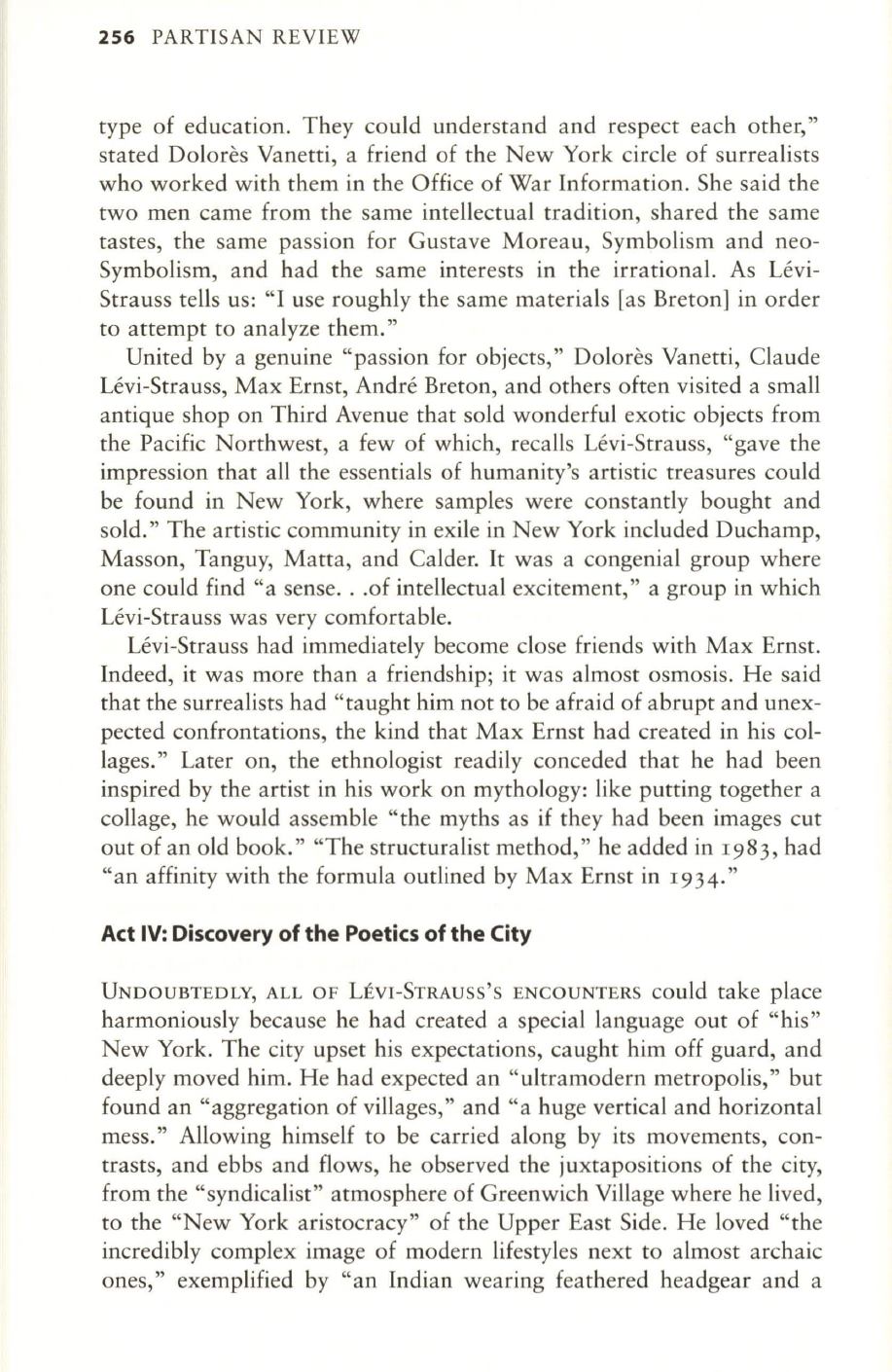
256
PARTISAN REVIEW
type of education. They could understand and respect each other,"
stated Dolores Vanetti, a friend of the New York circle of surrealists
who worked with them in the Office of War Information . She said the
two men came from the same intellectual tradition, shared the same
tastes, the same passion for Gustave Moreau, Symbolism and neo–
Symbolism, and had the same interests in the irrational. As Levi–
Strauss tells us: "I use roughly the same materials [as Breton] in order
to attempt to analyze them."
United by a genuine "passion for objects," Dolores Vanetti, Claude
Levi-Strauss, Max Ernst, Andre Breton, and others often visited a small
antique shop on Third Avenue that sold wonderful exotic objects from
the Pacific Northwest, a few of which, recalls Levi-Strauss, "gave the
impression that all the essentials of humanity's artistic treasures could
be found in New York, where samples were constantly bought and
sold ." The artistic community in exile in New York included Duchamp,
Masson, Tanguy, Matta, and Calder.
It
was a congenial group where
one could find "a sense...of intellectual excitement," a group in which
Levi-Strauss was very comfortable.
Levi-Strauss had immediately become close friends with Max Ernst.
Indeed, it was more than a friendship; it was almost osmosis. He said
that the surrealists had "taught him not to be afraid of abrupt and unex–
pected confrontations, the kind that Max Ernst had created in his col–
lages." Later on, the ethnologist readily conceded that he had been
inspired by the artist in his work on mythology: like putting together a
collage, he would assemble "the myths as if they had been images cut
out of an old book." "The structuralist method," he added in
1983,
had
"an affinity with the formula outlined by Max Ernst in
1934."
Act IV: Discovery of the Poetics of the City
UNDOUBTEDLY, ALL OF LEVI-STRAUSS'S ENCOUNTERS could take place
harmoniously because he had created a special language out of "his"
New York. The city upset his expectations, caught him off guard, and
deeply moved him. He had expected an "ultramodern metropolis," but
found an "aggregation of villages," and "a huge vertical and horizontal
mess." Allowing himself to be carried along by its movements, con–
trasts, and ebbs and flows, he observed the juxtapositions of the city,
from the "syndicalist" atmosphere of Greenwich Village where he lived,
to the "New York aristocracy" of the Upper East Side. He loved "the
incredibly complex image of modern lifestyles next to almost archaic
ones," exemplified by "an Indian wearing feathered headgear and a


